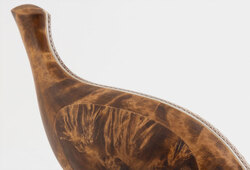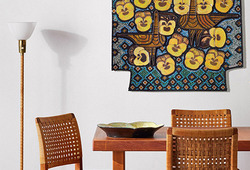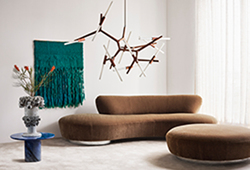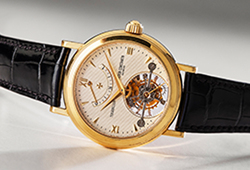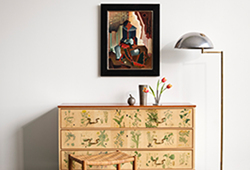Important Spring Sale presents Zorn
Anders Zorn Flodakulla en face
In 1898 Anders Zorn had a cabin moved from Fåsås to the Zorn House. The old building (its timber dendrochronologically dated to 1292!) came thereafter to serve as an atelier. A few years later, in 1903, the atelier space was extended when the artist had a new building added to the Zorn House. Zorn describes it himself in his autobiographical notes, Självbiografiska anteckningar, how the new building gave him entirely fresh possibilities as regards to his painting: “From my friend Oskar Schollin, the last surviving ‘Mora’-gentleman, I had been given an old loft, mid 16th century, wherein I had the most curious illuminations for the female nudes I wished to paint. A little round opening on one of the walls and an open door out onto the loft gallery gave me a wealth of tempting reflections”.
The loft, called ‘Risaloftet’, was erected by the main entrance to the Zorn House, adjacent to the cabin from Fåsås. Zorn was particularly interested in the unusual light conditions in the timber hut. The poorly lit cabin was a challenge to the artist’s prowess at using natural light. Zorn allowed the light to flood in through the door opening, so as to achieve the effects of light that he never seemed to tire of painting. The light changing across the models, the nudes, or the Dalecarlian women dressed in their local folk costumes, was studied in whole or half-length portraits and against more or less detailed backgrounds.
In the present painting the artist’s love for the old Dalecarlian culture and its bright, rosy-cheeked young women is clear. Zorn confirms his skill as a colourist, playing on the beautiful and rich colours of the folk costume to accentuate his composition. Hans Henrik Brummer writes, in one of his many books on Zorn, about the artist’s “unambiguous celebrations of the ‘Mora’-costumes’ colourfulness”. This time, however, it is a costume from ‘Floda’ that illustrates the display of colour in the composition. The embroidered jacket glows in red, as does the hairband, the hem of the skirt and the stocking. The light falls in from the left through the door opening and one can just about make out the reflections from the little window inside the room. Zorn has let the light play across the clothing, the timbered walls and the girl’s features – clear evidence of his talent at mastering light and shade.
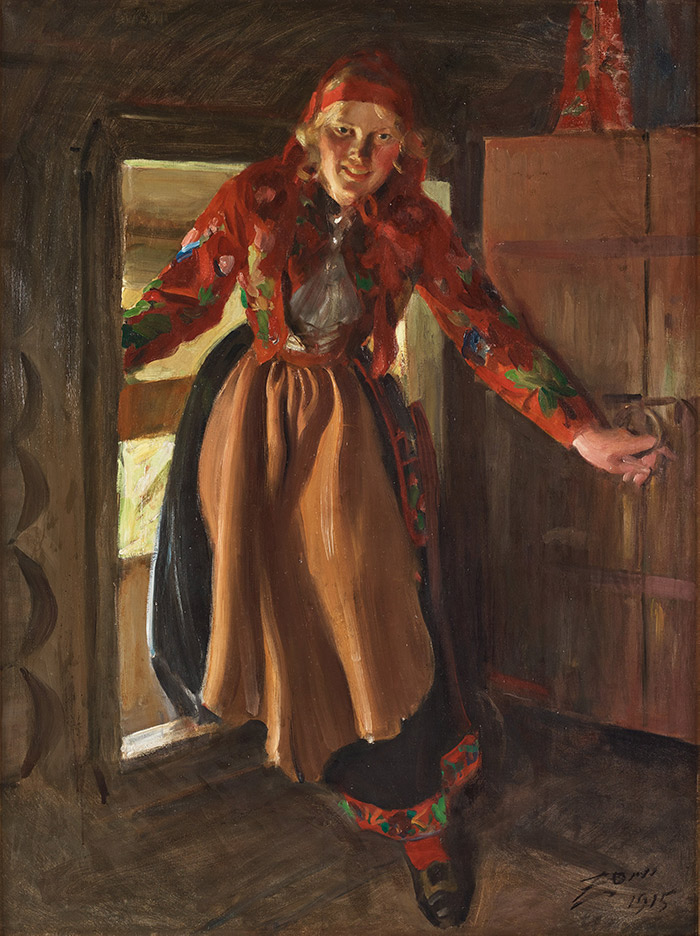
The model is worth a special mention. This was not your regular Dalecarlian woman who had dressed herself in the ‘Floda’-costume, but none other than Brita Söderblom (later married to archbishop Yngve Brillioth). Brita was the daughter of the (at this point) newly appointed archbishop Nathan Söderblom. The Söderblom family were regular guests at Anders and Emma Zorn’s house in Mora. There clearly existed a warm friendship bond between the families, which could be traced back to the time they had spent together in Paris during the 1890s. Around 1915 it appears that their socialising had intensified. In January of that year, Nathan Söderblom visited Mora. Furthermore, in August, Söderblom and Zorn, together with the Director General of the National Heritage Board, Sahlin, took a trip by car through the county of Hälsingland. The journey went from Söderala through Trönö, Hudiksvall and Bjuråker.
Several of Zorn’s iconic oil paintings were created during 1915. Amongst the most well known of these must be Självporträtt i rött (oil on canvas, 120 x 90 cm, Zorn Museum, Mora), Självporträtt i vargskinnspäls (oil on canvas, 90 x 58 cm, Zorn Museum, Mora) and Gammal spegel (oil on canvas, 122 x 92 cm, sold at Bukowskis Spring 2020, private collection). Yet Zorn’s inspiration during that year also produced a number of other skilfully accomplished compositions, including two versions of the present subject where Brita is the model. In the second painting (Flodakulla i loftsdörren, oil on canvas, 120 x 90 cm, private collection) Brita looks out through the loft door.
Signed Zorn and dated 1915. Oil on canvas 120 x 90 cm. Estimate 3 000 000 - 3 500 000 SEK
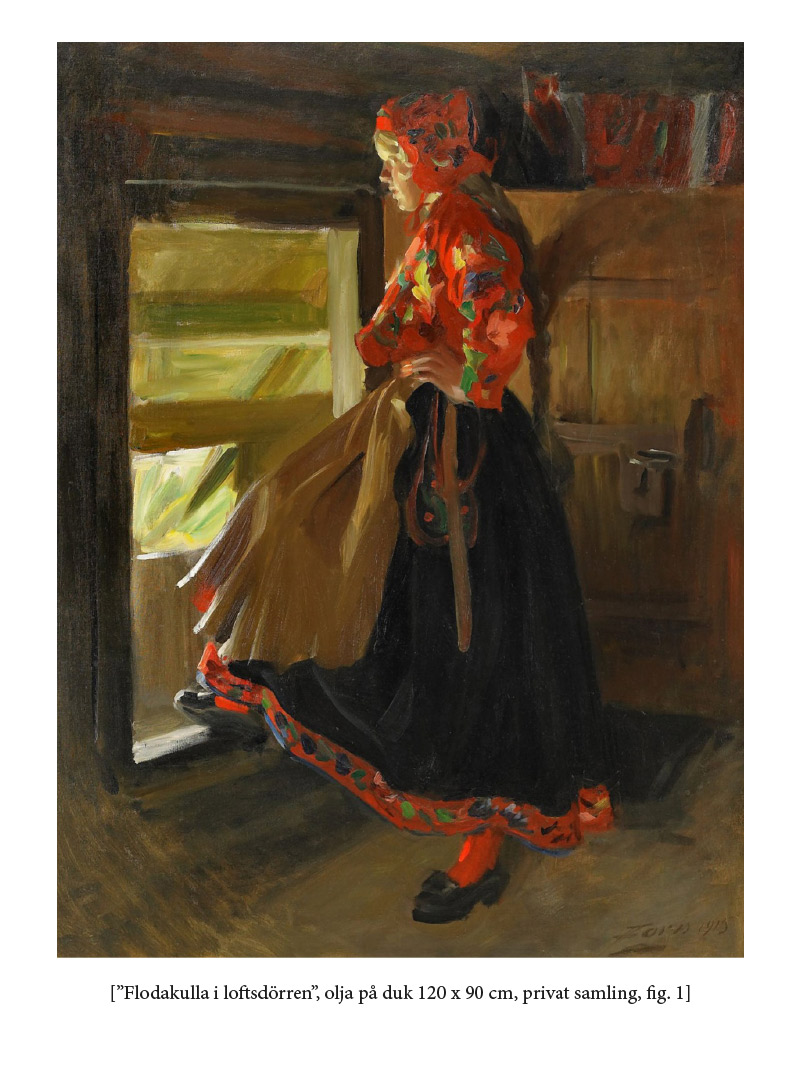
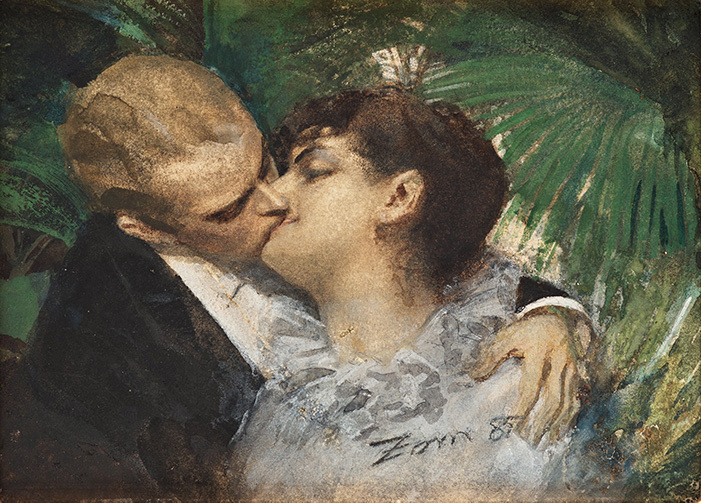
Anders Zorn The Embrace
This practically unknown watercolour was exhibited in New York in 1923 under the title "The Embrace". Even if there is nothing wrong with the name itself, we should today probably relate the watercolour to the motifs of Zorn that are documented under the title "The Kiss".
The Zorn collections' archives contain information on four drawings and three watercolours in Zorn's production, all of which go under this name. The earliest work, made in 1880-81, is a mere three centimetres high oval pencil drawing mounted in a gold brooch and belongs to the Zorn collections (ZT 1183). The other five listed works are dated 1881, all in private ownership and vary in size, where the formats are alternately rectangular and alternately oval.
To estimate the exact date of the directory number is associated with some degree of uncertainty. With the support of the Zorn Museum's information, 1881 should be a reasonable assumption. However, this is contradicted by the dating (-85). According to the expertise at the Zorn Museum, however, most evidence is that both "signature" and date are added later by someone other than Zorn. It may possibly be court conservator Gustaf Jaensson, who, according to the inscription on verso, certifies the work's authenticity, who in the best intentions added the inscription.
Some guidance is provided by parts the production from Zorn's time in London during 1882-83. The catalogue number's models could be identical to Zorn's famous model Mary Smith and his friend Christian Bolinder, with whom the artist became friends during the English years. The resemblance of the female model to Mary is clarified in comparison with the watercolour "Mary in the studio" from 1882-83. In both compositions, the refined pleated white lace collar reappears.
Another interesting comparison can be made with "Ateljén vid Brook Street" from 1883 (oil on panel, Zornsamlingarna, Mora). In the background of this interior from Zorn's studio in London, one can easily identify works such as "In grief", "The kiss", "Self-portrait", and the above-mentioned "Mary in the studio". The depicted version of just "The Kiss" shows striking similarities with the catalogue number.
Possibly this may indicate that Zorn returned to the motif circle "The Kiss" during these years in London and this time with Christian Bolinder and Mary Smith as models.
Probably executed in London circa 1882-83. Inscribed: "Zorn 85". Watercolour and gouache on paper 13 x 18 cm. Estimate 300 000 SEK.
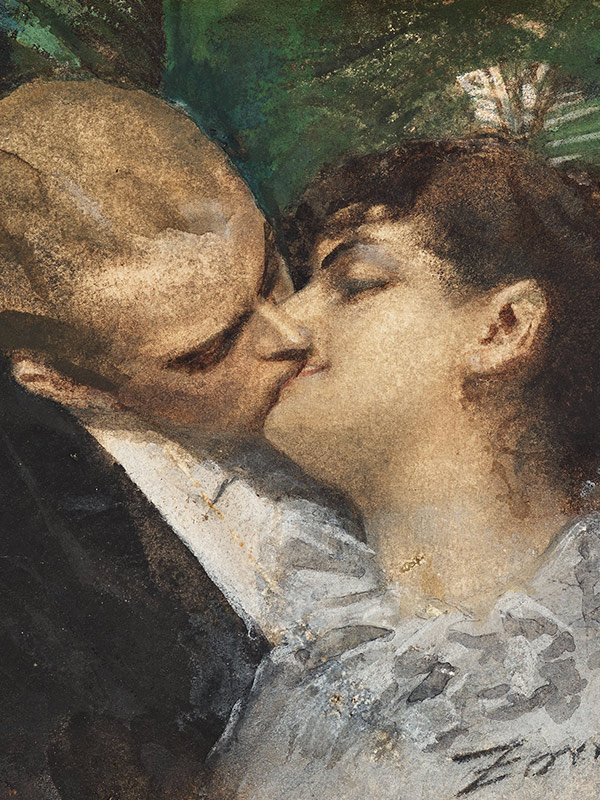
When is the viewing and auction?
Viewing 27 May – 1 June, Berzelii Park 1, Stockholm.
Auction 2 – 4 June, Arsenalsgatan 2, Stockholm.
For more information Contact specialist
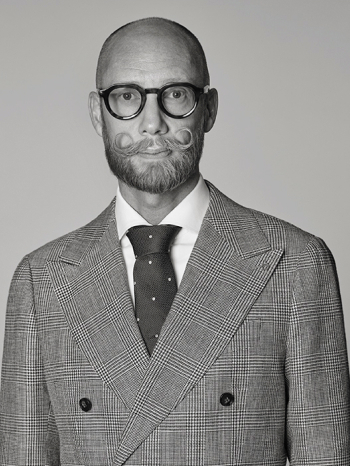
Tukholma
Björn Extergren
Johtava asiantuntija sisäänjättö ja myynti. Asiantuntija antiikkikalusteet, taidekäsityö ja aasialainen keramiikka
+46 (0)706 40 28 61

Tukholma
Andreas Rydén
Varatoimitusjohtaja, Johtava asiantuntija, taide
+46 (0)728 58 71 39






